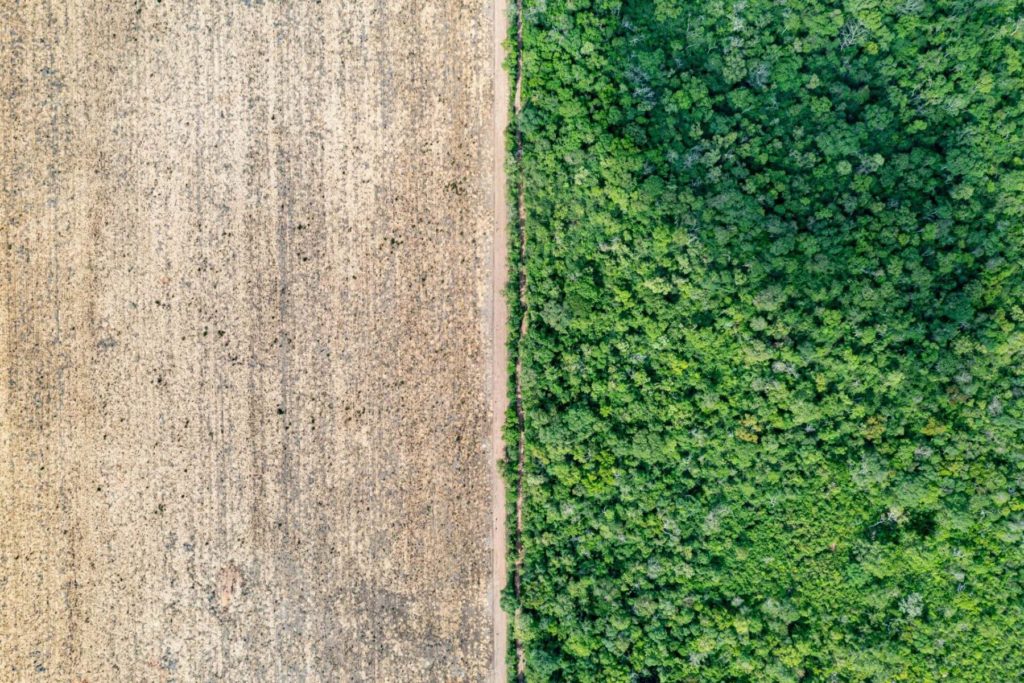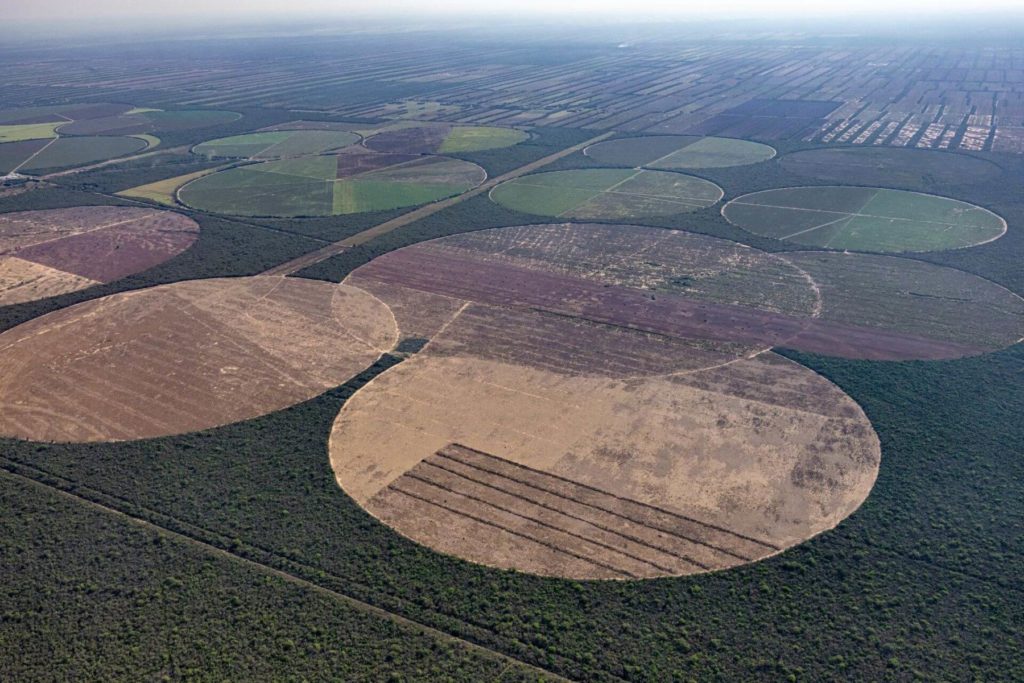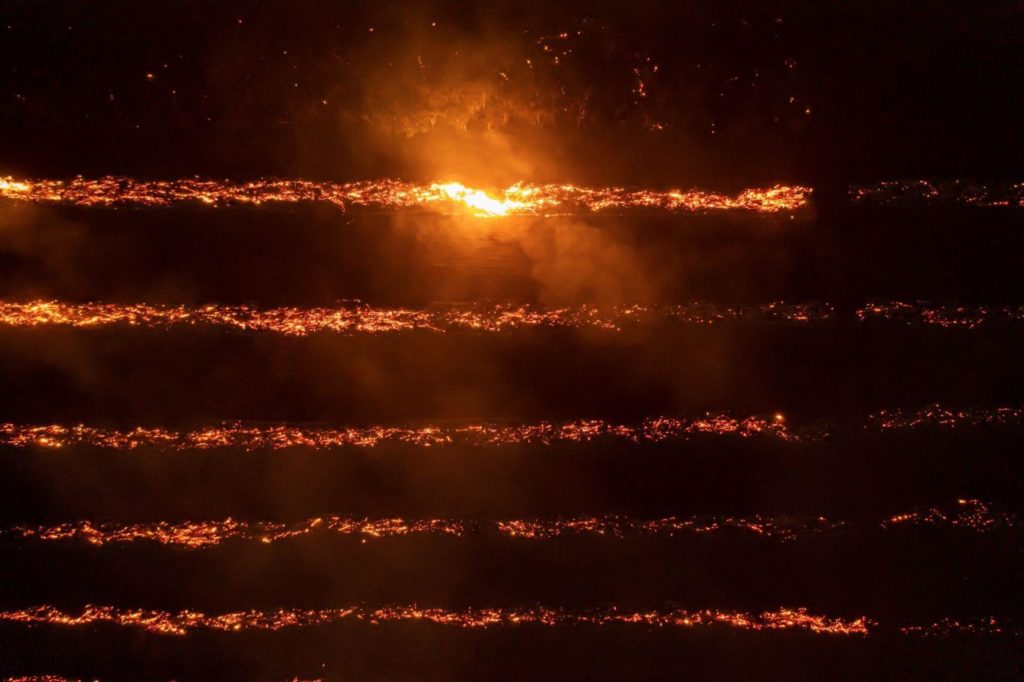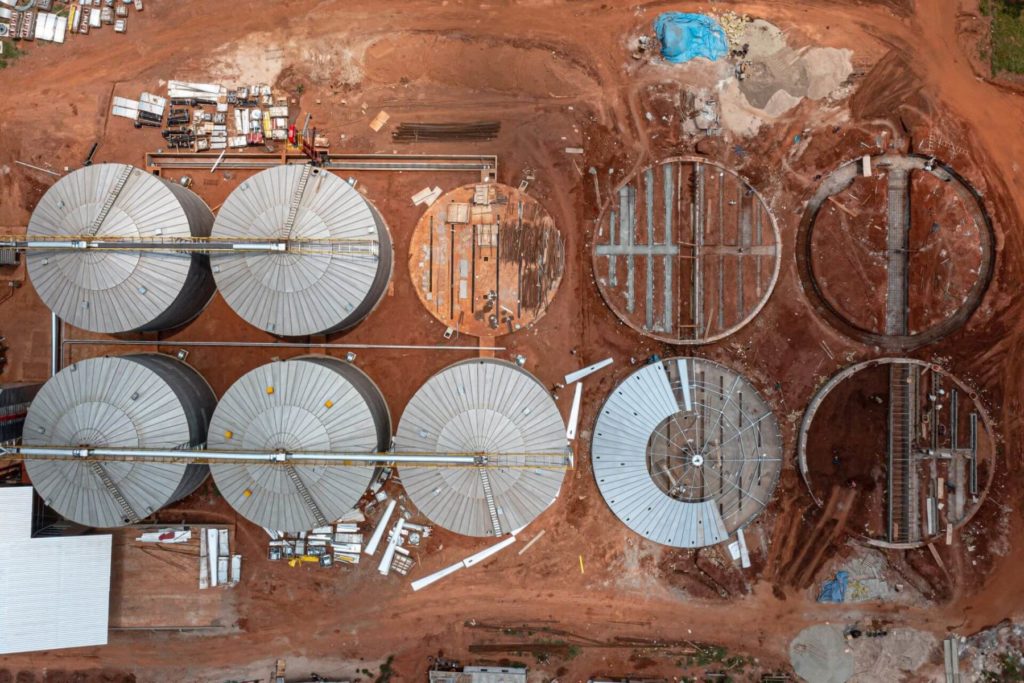Deforestation in Bolivia: A Threat to Biodiversity
Bolivia’s disappearing forests: fires and deforestation leave a trail of devastation, yet the world hardly notices.
In the autumn of 2022, fires devoured thousands of hectares of Bolivian forest, leading to the replacement of the trees with soy, corn, sorghum, and, later, cattle.
The shrinking of the Bolivian tropical forests is widely under-reported since it is eclipsed by the fast destruction of the Amazonian rainforests in neighboring Brazil. Yet the intensity of Bolivian deforestation is such that the country suffers from the world’s third-highest deforestation rate, right after Brazil and the Democratic Republic of the Congo (DRC).
According to the Global Forest Review from the World Resources Institute, Bolivia lost almost 400,000 hectares of primary forest in 2022, surpassing Indonesia, despite having less than half the amount of primary forest. Between 1976 and 2021 Bolivia lost 8.6 million hectares, equivalent to 14% of its forests. And the intensity of the process is only gathering pace, supported by the governmental policies implemented through legislation and fund allocation. The Bolivian government actively encourages deforestation, allowing permits for cutting down trees in protected natural reserves and areas inhabited by indigenous communities.
Much like in Brazil, the main driving force behind Bolivia’s forest loss is the proliferation of surfaces for cattle ranching and soy production.

Around 80% of Bolivian cattle are raised for domestic consumption; the rest is exported, especially to China. The soy situation is very similar. In total, two-thirds of Bolivia’s farming surfaces are used for raising or feeding livestock.
Much like in Brazil, the main driving force behind Bolivia’s forest loss is the proliferation of surfaces for cattle ranching and soy production.
According to Marlene Quintanilla, director of research and knowledge management at Fundación Amigos de la Naturaleza (Friends of Nature Foundation, FAN), 1.9 million hectares of tropical rainforest have been turned into farming land or pastures from 2010 to 2020. And then, there are the 1.5 million hectares of other forest ecosystems, which are now so degraded they no longer fall under the definition of forest.
This colossal die-off has also been facilitated by climate change – parts of Bolivia are already turning into savannahs.
Legislating and validating deforestation
During his first mandate, Evo Morales, President of Bolivia from 2006 to 2019, had done much for nature. He changed the constitution to include the rights of Pachamama, the Bolivian term for Mother Earth and indigenous communities were given clearly delineated territories and awarded land-use rights.
Yet soon after the end of Morales’ first mandate, things took a dire turn for the worse: a key turning point came in 2015, when the Morales government decided to renounce the economic model based on the export of oil and natural gas, replacing it with a focus on agriculture. To achieve the economic goals, the authorities needed the territories previously claimed by the forests and the indigenous communities.
“This was a huge wound for our entire environmental policy, and the fires and huge loss of forest were a direct consequence,” said Gonzalo Colque, Executive Director of the NGO Fundación Tierra (Earth Foundation).
The 2013-2016 period marked an increase in issued permits for the eradication of forests. Illegal deforestation also experienced a great surge. According to Oswaldo Maillard, coordinator for the Chiquitano Dry Forest Observatory at The Foundation for the Conservation of the Chiquitano Forest (FCBC), between 2012 and 2021, 60% of all deforestation in Bolivia was illegal.

The Morales government passed numerous laws that helped industrial agriculture, such as the law legalizing illegal deforestation prior to 2011, the 2015 law allowing the cut down of up to 20 hectares of forest on small community-owned plots, and the law setting the goal of tripling the country’s livestock population to more than 22 million animals. Finally, in 2019, another one authorized the cutting and controlled burning of forests on private properties and community-owned land in the Santa Cruz and Beni departments.
a large part of Bolivian forests used to be owned by the state, [but] over the past ten years, managing those properties was subject to a lot of corruption and other illegal activity. Thousands of hectares in Amazonia and Chiquitania are now owned by private interest – entrepreneurs, farmers, cattle ranchers, and also people with ties to the government, people who make a fortune by selling state-owned land. The forests were burned down and turned into farming land.
The numbers alone make it hard to imagine the extent of the devastation. To really get a grip on this colossal process, one has to see it from the air.
Gonzalo Colque explained that “a large part of Bolivian forests used to be owned by the state, [but] over the past ten years, managing those properties was subject to a lot of corruption and other illegal activity. Thousands of hectares in Amazonia and Chiquitania are now owned by private interest – entrepreneurs, farmers, cattle ranchers, and also people with ties to the government, people who make a fortune by selling state-owned land. The forests were burned down and turned into farming land.”
The Bolivian farming land is the cheapest in the region. While a hectare in Brazil costs between $3,000 and $11,000 US dollars, its Bolivian counterpart rarely goes for more than $3,000 dollars. A huge part of the deforestation costs is related to the fuel powering the machinery and Bolivia’s system of public subsidies makes it the cheapest among all the countries in the region – one liter of fuel costs half a dollar, compared to almost a dollar and a half in Brazil.
Cutting down the forests is also subsidized. The farmers are subjected to very low taxation, and the cost of labor is low as well. The state-owned primal forests are available for between 70 and 160 dollars per hectare. When, after four or five years, the plots are ready for farming use, they are worth anywhere from 1,500 to 1,800 dollars per hectare.
The lucrativeness of trading in land is only rivaled by the lucrativeness of the drug trade, which is also flourishing in Bolivia. To compound the irony, the assault on the local forests in the name of agriculture is indirectly subsidized by the state with money from its pension fund.
Three drivers of deforestation
One of the three key players in the process is the Bolivian and foreign companies, especially the Brazilian ones, then the so-called interculturales – settlers from the mountainous regions of Bolivia –, and finally the religious group of the Mennonites.
The first players, the companies, often come to own the forests by bribing politicians and state officials. Although they represent a mere four percent of all owners in rural areas, these corporate entities already own approximately 36% of the plots, according to sources speaking on the condition of anonymity.
The lucrativeness of trading in land is only rivaled by the lucrativeness of the drug trade, which is also flourishing in Bolivia. To compound the irony, the assault on the local forests in the name of agriculture is indirectly subsidized by the state with money from its pension fund.
The interculturales, hill-dwellers of the Aymara and the Quechua peoples, have started being resettled by the government to the eastern lower regions as part of a project to secure support for the socialist government in the traditionally right-wing Santa Cruz department.
Marlene Quintanilla explained that “the forests in Chiquitania were owned by the state and protected by law, they could only be utilized for forestry purposes. Over the past 15 years, that all changed.” It is now against the law for the land-right owner to produce nothing on the plot and landowners are obliged to farm the land – and the cheapest way to achieve that is to grow soy or turn the plot into pastureland.
The third great predator in the forests is the Mennonite colonies, religious communities of extremely orthodox protestants highly opposed to modern life.
Bolivia is home to about 150,000 Mennonites living in isolated communities or colonies, employing horse carts and tractors for transport, and communicating in Plattdeutsch, the old German language of their forebears.
Each colony consists of several families, each owning 50 hectares of land, while some also rent additional plots from private owners. They have proved very swift and efficient in turning the forests into farming land – when they are done with one area, they relocate to the next and start turning the forests into farming and grazing land.
Forest fires galore
An important contributor to the loss of forest is the fires mostly connected to the spreading of farming surfaces.
According to University of Maryland research, fires are the cause of over a third of all forest losses in Bolivia. The practice of controlled burning-down of the land is a long-established one. But due to the worsening drought and heat caused by climate change, the fires now often run amok and spread to the forests.
It is no coincidence that the greatest loss of forest and the greatest number of fires – more than two-thirds of all Bolivian fires – occur in Santa Cruz. The department serves as the country’s agricultural hub and a great deal of the department is formed by Chiquitania, the world’s largest dry tropical forest boasting remarkable biodiversity that Bolivia shares with Brazil and that also suffers from the second highest rate of deforestation, after Cerrado in Brazil.
In 2019, four million forest hectares burned down in the Santa Cruz department alone, the worst fires to date as fire remains the cheapest and swiftest means of clearing off the forest. Fires, both large and small, both purposeful and accidental, have become a permanent fixture of Chiquitanian life between August and October. Last year, they also spread out into November.
In 2019, four million forest hectares burned down in the Santa Cruz department alone, the worst fires to date as fire remains the cheapest and swiftest means of clearing off the forest. Fires, both large and small, both purposeful and accidental, have become a permanent fixture of Chiquitanian life between August and October. Last year, they also spread out into November.
Luis Vargas Perez from the city of Concepción’s ABT branch told us that in 2022, nineteen illegal fires were reported in the area. The penalty is laughably low: two hundred dollars for a thousand burned-down hectares. “This is why the fires can be very lucrative for the large landowners,” Vargas Perez explained.
Another consequence of deforestation is the loss of biodiversity. Then there is soil degradation, air-quality degradation, water shortages, and contamination of water sources with fertilizers and pesticides, not to mention the introduction of new pests. All these calamities have already proved a great hindrance to the members of the local indigenous communities, who view the forest mainly as a key survival resource.

“If the Bolivian government continues to encourage deforestation and forest fires, things will only get worse,” Marlene Quintanilla cautioned. “Yet one also needs to consider the consequences for the wider Amazon region.”
The Amazon Forest is quickly nearing the tipping point when it will be irreversibly turned from a lush tropical forest into a dry and degraded savannah and then, it will stop functioning as a sinkhole for greenhouse gases and will become one of their sources. According to scientific predictions, the tipping point will be achieved when 25% of the forest is lost, either cut down or degraded.
Another consequence of deforestation is the loss of biodiversity. Then there is soil degradation, air-quality degradation, water shortages, and contamination of water sources with fertilizers and pesticides, not to mention the introduction of new pests. All these calamities have already proved a great hindrance to the members of the local indigenous communities, who view the forest mainly as a key survival resource.
A report by RAISG, the Amazonian Georeferenced Socio-Environmental Information Network, estimated that 26 percent of the Amazon Forest had already been irreversibly altered. The savannization of Amazonia is already apparent in Brazil and Bolivia, while Ecuador, Colombia, and Peru are moving in the same direction. The Amazonian part of Brazil, host to 40 percent of the globe’s tropical forests, has already reached the tipping point, as 34 percent of its forests have been lost.
Altering the lives of locals
“My grandfather chose Bolivia for his home because he felt it was what paradise looked like. Warm climate, no wars, natural disasters, fertile soil. If he were to return today, he would not believe what the current inhabitants are doing to his land. This whole thing, it has long become all about greed,” grimaced Luis Albert Bauer Saucello, talking from the veranda of his home in San Ignacio de Velasco in eastern Bolivia’s Chiquitania region.
Even before noonday, the heat in the small town established by Jesuit missionaries in the 18th century was nearing unbearable.
“In ten to twelve years, no one will be living here. It will be too hot, and the water will run out. And all just because they decided to destroy our forests,” Saucello continued. Until 2021, he had served as the president of the cooperative supplying the town with water and electricity.

The forests in Bolivia are being cleared off with heavy machinery. The trees are chopped down and burned. When the fire settles, the machines go on to remove the roots. The surface is flattened several times, then it is deemed suitable for crops – however, the problem is that most forest land is unsuitable for growing crops. After three to four years, the soil becomes too impoverished, so the fields are converted to grazing lands, explained Oswaldo Maillard.
Most forest land is unsuitable for growing crops. After three to four years, the soil becomes too impoverished, so the fields are converted to grazing lands
In the city of San Ignacio de Velasco, inhabited largely by indigenous communities, lie vast soy fields owned by Sofia, one of Bolivia’s leading food companies. The soy is produced for feeding the animals at Sofia’s farms and the farms of the company’s contractors. As recently as three years ago, the area was still covered with state-owned forests, but today the surfaces not yet sown with crops are fenced off, and the locked entrances to the fields bear warnings of video surveillance.
Drone footage revealed what the area used to look like. The clear-cut between bleak dry ground and dense tropical forest serves as the archetypal image of the destruction of tropical forests.
The corporation’s arrival in San Ignacio de Velasco brought immediate consequences for three of the nearby farming communities, which are now running out of water – the groundwater became contaminated with the remnants of pesticides and fertilizers. The intense use of pesticides on the soy fields made the pests more resistant, so the communities’ farming yields started to diminish.
Locals try to react
Even though the San Rafael municipality is home to a number of cattle ranchers, Vargas Roca does not blame them for the deforestation. He blames the immigrants from the Altiplano. According to a 2001 census, the San Rafael municipality was home to some 5,000 residents. Over the last years, however, as many as 150 new farming communities were established.
Vargas estimates the total of new arrivals at around 18,000, though all of them do not live there. Many of the new communities are mere ghost communities, established to secure land rights on state-owned properties. The price of land within the municipality keeps rising, especially after 2019 saw the beginning of the construction of a freeway connecting San Rafael to San Jose de Chiquitos.
“Some of the arrivals from Altiplano had been misled into coming here,” Vargas clarified. “And when they realize that life here is far from easy, they return to where they came from. Others decide to stay. Since no one taught them how to live with the forest, they burn it down and chop whatever remains to make coal. Sooner or later, they demand water, healthcare, and schooling from the municipality. And this creates a great deal of pressure on our budget.”
Vargas regards the recent surges in immigration, particularly since 2015, as a political project intended to remodel the demographics in the department widely considered as the central government’s harshest critic. But the state-owned land is starting to run out. Vargas’ fear is that, once there is no more state-owned land to be had, the incomers will start looking to the locals’ properties.
After it became obvious that the government in La Paz intended to do nothing to stop the destruction, some of the municipalities decided to take their own preventive measures.
In San Rafael, a forest reserve was set up as far back as 2006. Its surface covers almost 70,000 hectares, and it represents an important ecological bridge between the region of Chiquitania with the tropical dry forest and the Pantanal region, the world’s largest tropical wetland, explained Pedro Languidey, a forestry engineer, who is employed half-time by FCBC and half-time by the municipality.
This forest means the world to us, it is our life, our lungs, our source of clean air. We must do something so that our children still know what trees are. And so that we can teach them the importance of a forest.
Languidey spent the last two years raising awareness about sustainable forest management within the local community. The problem is that he is almost alone in this endeavor, the municipality does not have the funds to employ guards at the forest reserve, making it easy prey for illegal felling and burning. All Languidey can do is head over to the reserve once or twice each month to record the damage.

Within the reserve one can find soot-streaked charcoal-makers and a shepherd tending to a herd of emaciated cows, followed by several wooden huts close to some fields with the crop still unharvested.
“Although such settlements are obviously deserted, the INRA classifies them as permanent,” Languidey remarked. He also showed us the location right next to the forest road where a narcotics lab was discovered a few years back.
A key part of Languidey’s job is to gather information on the extent of deforestation and his main two work tools are his motorcycle and his mobile phone with an app enabling him to map the geographic coordinates of a specific location and to estimate how much of the forest had been cut down. In many places, he is not exactly a welcome guest.
“This forest means the world to us, it is our life, our lungs, our source of clean air. We must do something so that our children still know what trees are. And so that we can teach them the importance of a forest,” sentenced Languidey.
Destruction continues
Over the last 20 years, 24 million hectares burned down in Bolivia – not only of forests but also other ecosystems.
“All the cattle ranchers say they do not burn down the forest. And all the agricultural producers claim that their soy is produced sustainably,” Oswaldo Maillard explained. The cattle ranchers seem unlikely to claim additional new surfaces, so he sees the soy growers as far more problematic. When we asked him about examples of sound practice in Bolivian forest management, he kept insisting there were none.
Over the last 20 years, 24 million hectares burned down in Bolivia – not only of forests but also other ecosystems.
According to Maillard, the Santa Cruz department is suffering from several connected environmental crises, and the problems are rapidly growing worse. Drought is an increasingly common occurrence. Lower humidity is conducive to an even drier forest open to an even higher risk of fires.
An FCBC study from November 2022 indicated that in certain areas in Chiquitania, long-term precipitation trends are significantly negative (- 20 %). Another FCBC study from December 2022 showed that the average daytime land surface temperatures in the forested areas in Chiquitania are three degrees lower than in the deforested areas.
“People do not realize that the more trees they chop down, the more thermic shocks and diseases there will be. the local communities are suffering from soil degradation, water, and air contamination, and from the loss of biodiversity as well,” Maillard summed up the situation.
